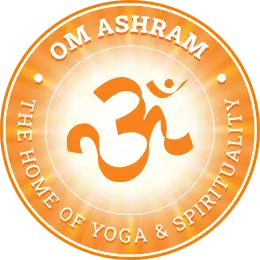Shiva Linga of OM Ashram: Pillar of Light
Written by Swami Hari OM Puri
Last updated: Oct, 16 2025 • 4 min read
Welcome to a modern wonder with an ancient soul.
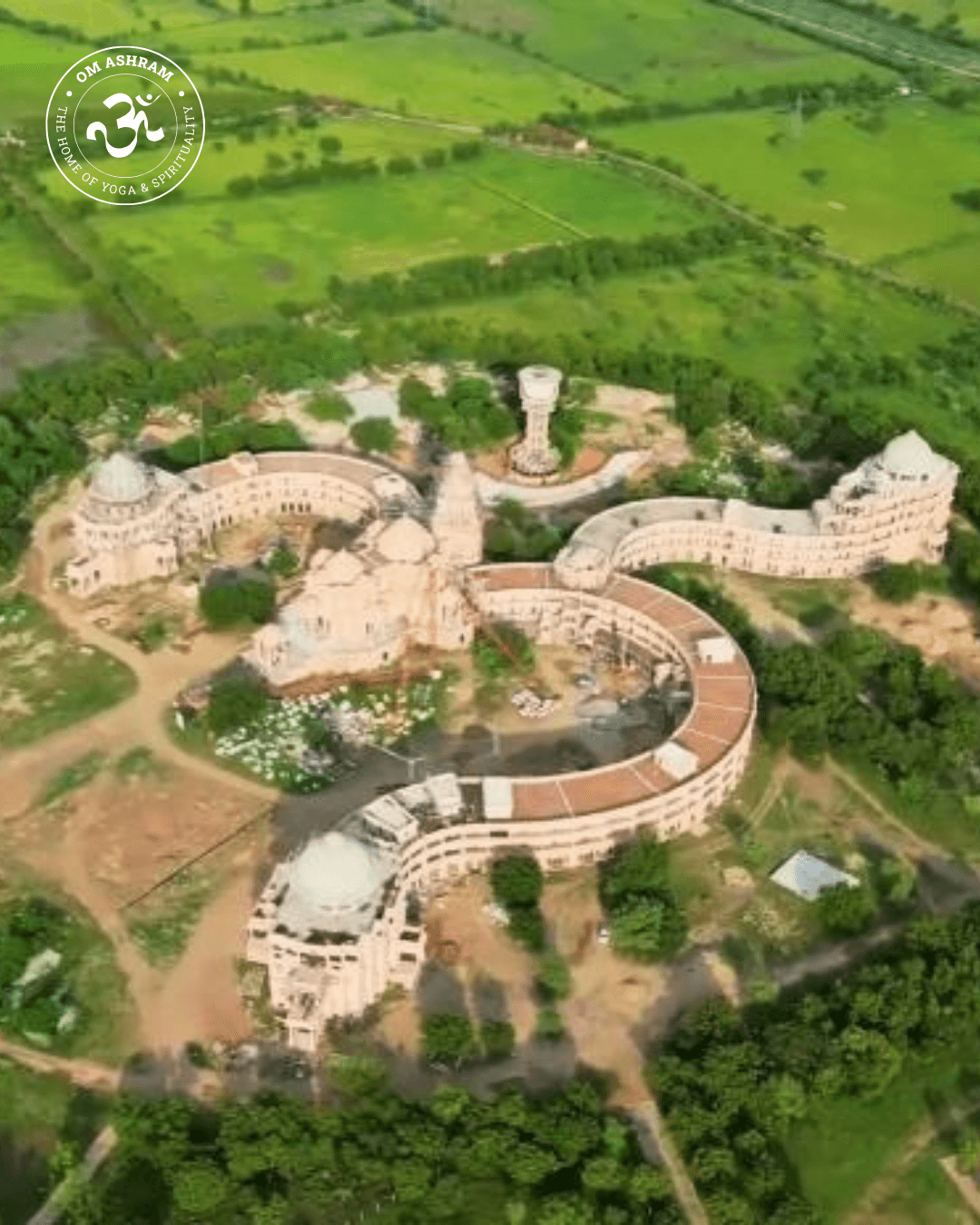
Jump To Section
The Shiva Temple is the heart of OM Ashram—the biggest building on Earth shaped like the sacred symbol OM.

Built entirely from hand-carved sandstone, every pillar and dome tells a story of devotion, truth, and Vedic heritage. But the temple's true power lies within.
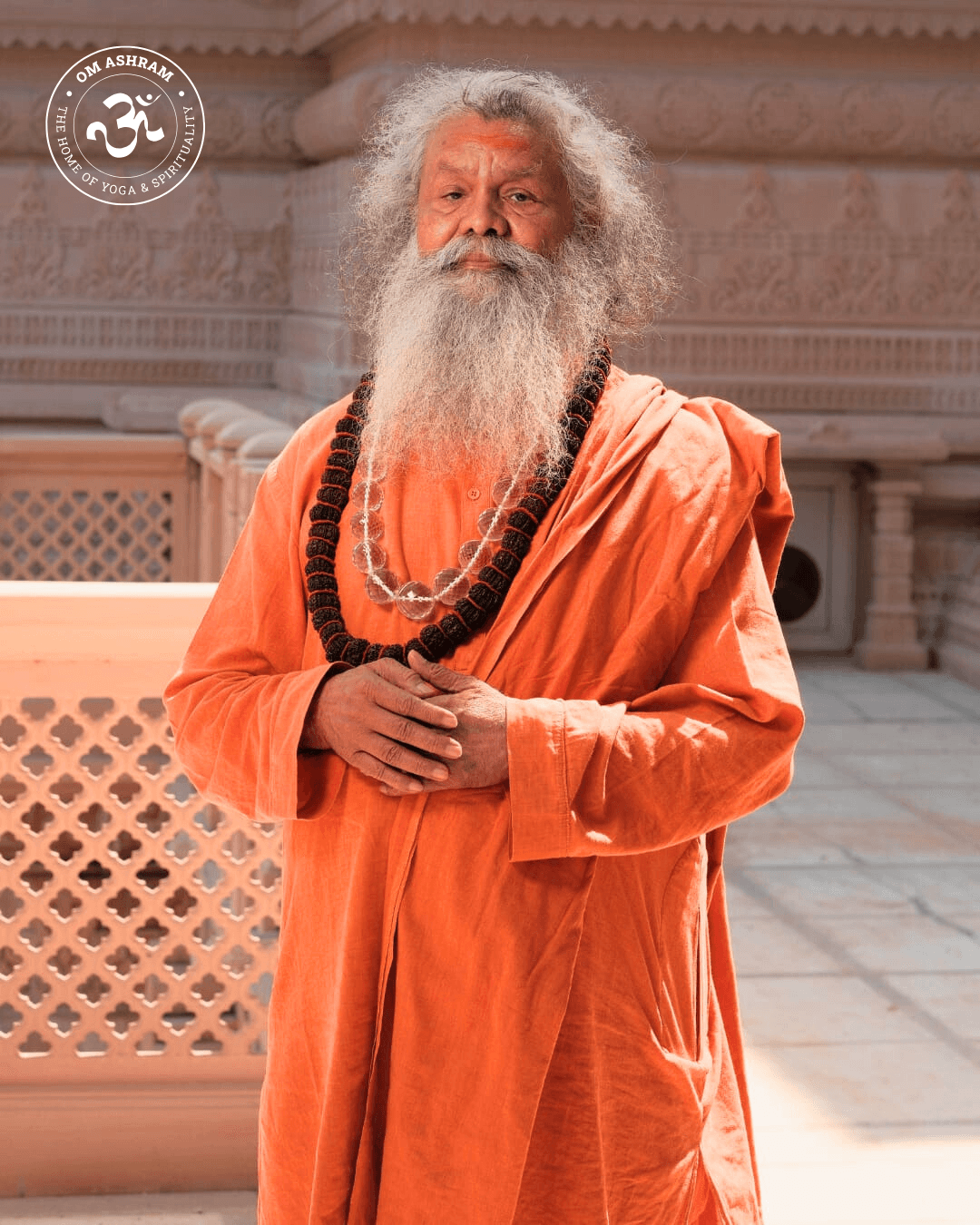
This architectural masterpiece was born from the divine vision of our beloved Gurudev, His Holiness Vishwaguru Mahamandaleshwar Paramahansa Shree Swami Maheshwarananda Puri Ji Maharaj.
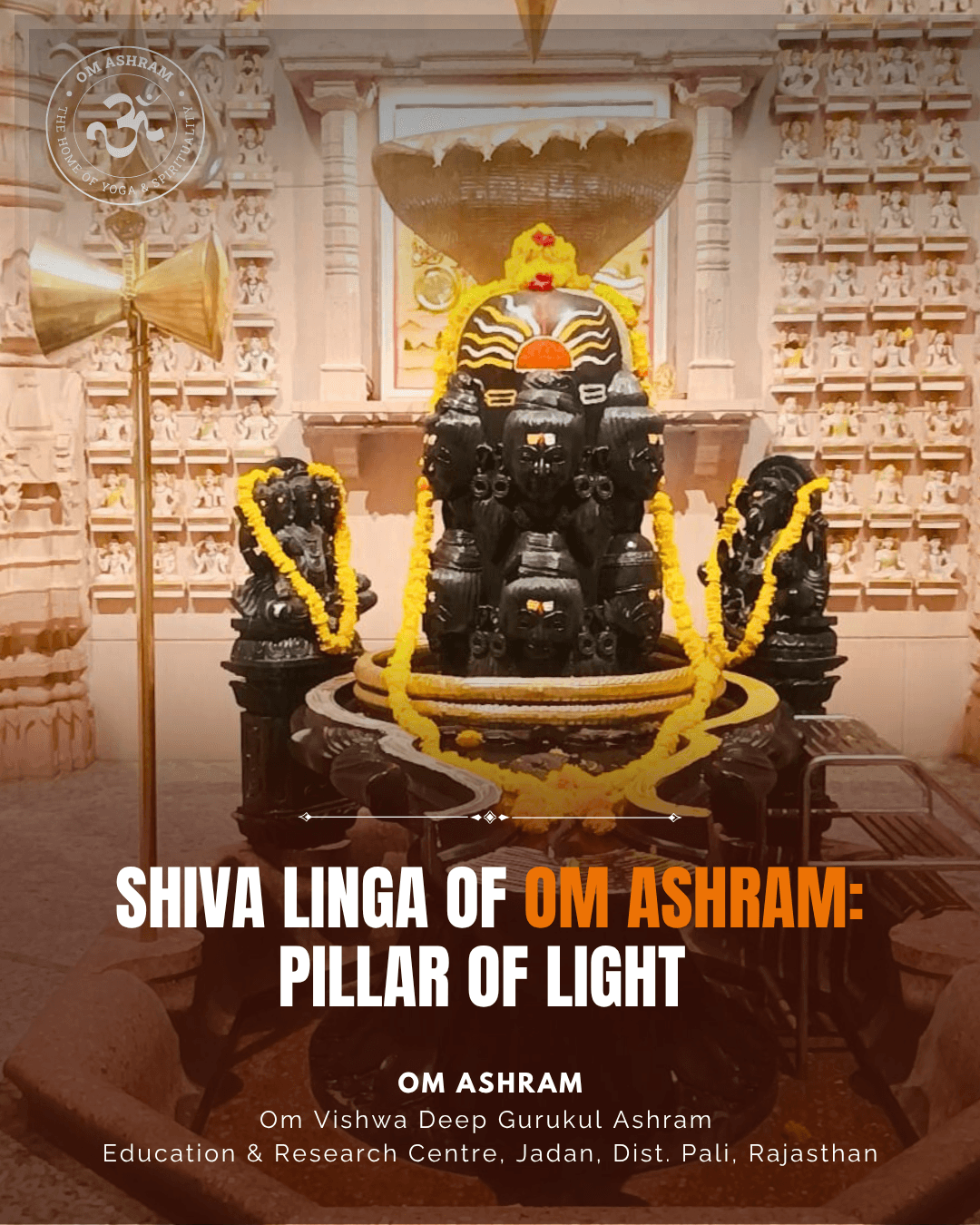
We invite you to discover the secrets of its central altar and the profound symbols of divinity it holds. Your journey into cosmic truth begins here.
1. The Lord Shiva: The Path to Absolute Consciousness
Three great forces govern the universe: Lord Brahma the Creator, Lord Vishnu the Preserver, and Lord Shiva the Transformer. They are all expressions of one formless Absolute.
Lord Shiva is more than a deity. He is the symbol of Absolute Consciousness, guiding us to spiritual liberation (mokṣa) and worldly fulfillment (bhoga) through an inner journey via the Chakras.

The goal is to unite Devi Shakti (divine energy) at our Root Chakra with Lord Shiva (pure consciousness) in our Crown Chakra. When they meet, we experience Oneness—a state where all desires vanish, replaced by lasting joy, unconditional love, and infinite compassion. (2)
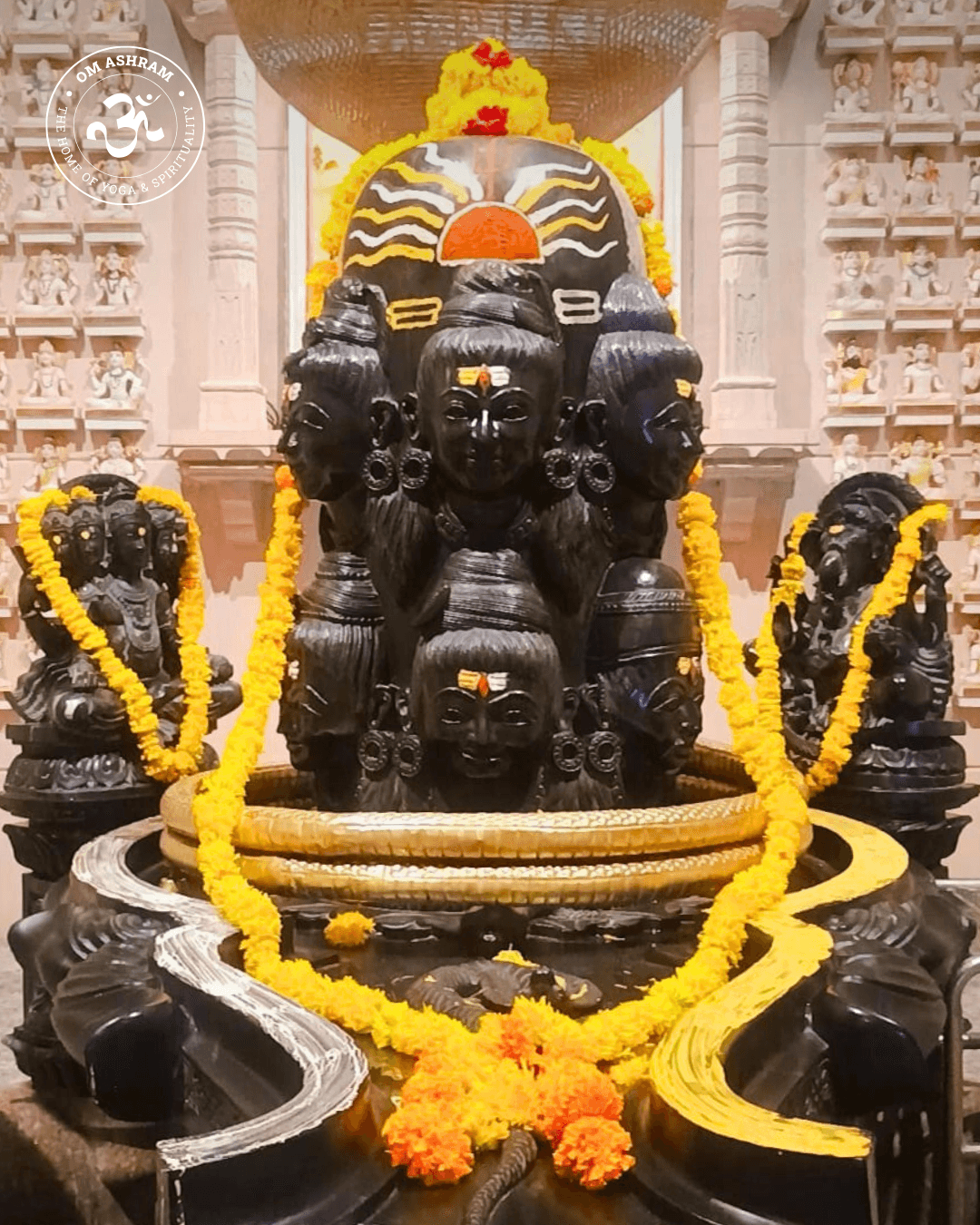
As our beloved Gurudev teaches in his book Hidden Powers in Humans (1), Lord Shiva guides us at every step:
- Root Chakra (Mūlādhāra): Elevates our awareness from animal instinct to human consciousness.
- Heart Chakra (Anāhata): He is the inner voice of the heart, leading us to our true Self.
- Third Eye (Āgyā Chakra): This is Shiva's eye of wisdom, granting us clarity and insight.
- Crown Chakra (Sahasrāra): Here, Lord Shiva is the experience of Absolute Consciousness.

One who awakens this inner light of Absolute Consciousness becomes a Guru—a true master. The word Guru itself means the power that leads us from darkness (GU) to light (RU). A Guru is more than a person. They are the living embodiment of Lord Shiva's light, a guide leading souls from ignorance to freedom.
2. The Divine Family: The Universe in Union
In the temple, Lord Shiva is never alone. He is always surrounded by his divine family, honoring the union of Lord Shiva (pure consciousness) and Goddess Parvati (divine energy). Together, they are the Father and Mother of the universe. (3)
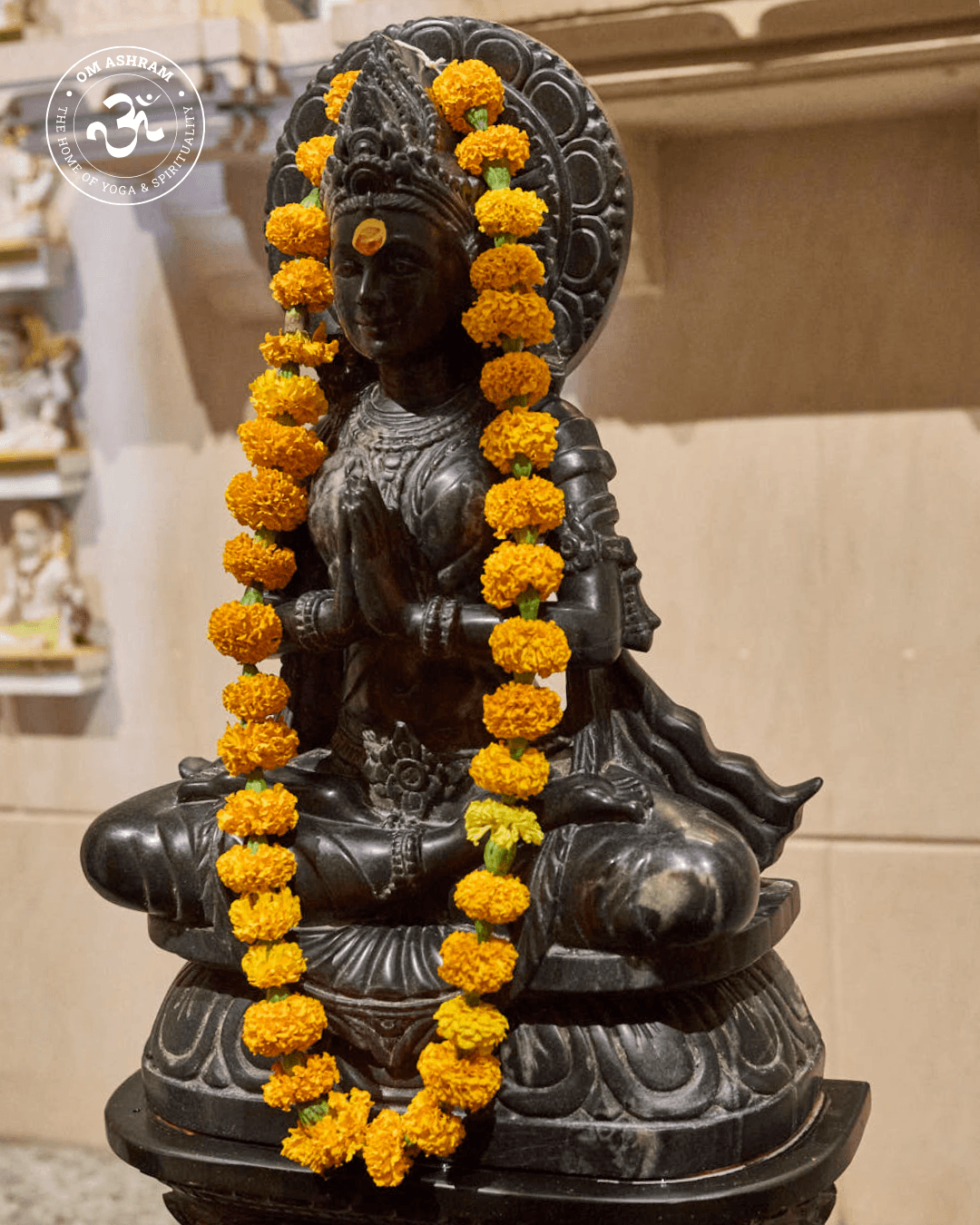
Goddess Parvati is Lord Shiva's eternal consort. She is Shakti, the divine feminine power essential for all of life. It was to her that Shiva first revealed the sacred science of Yoga as a gift to the world.
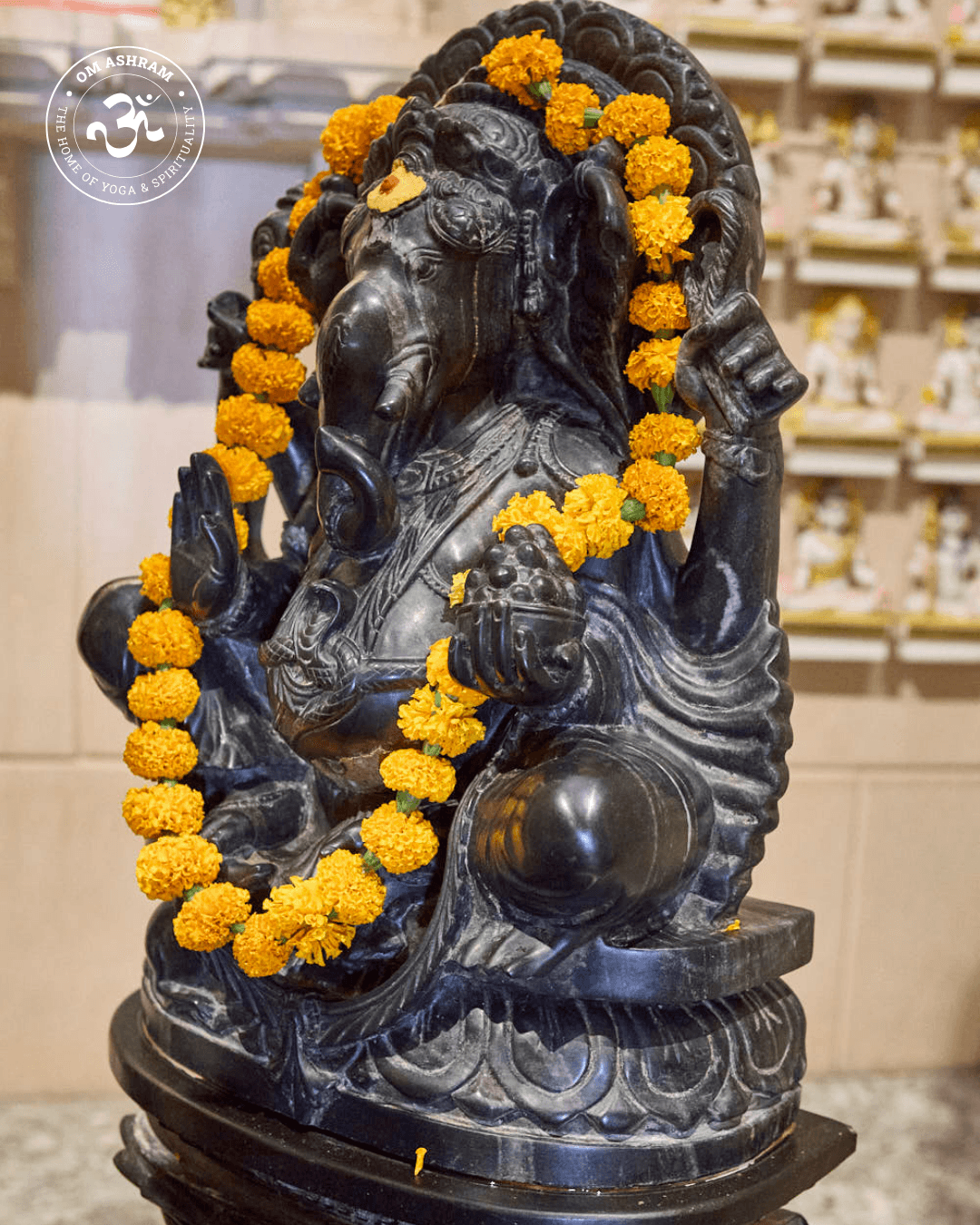
Lord Ganesh, their first son, is the remover of all obstacles. He is always worshipped first to clear the path for the devotee.

Lord Kartikeya, their second son, is the divine warrior and protector, defending cosmic order and righteousness.
3. The Pillar of Light: The Heart of the Temple
An ancient story from the Shiva Purana (3) explains why Lord Shiva is worshipped as a "pillar of light", also known as the Linga.

Long ago, Lord Brahma and Lord Vishnu argued over who was supreme. Lord Shiva appeared as a brilliant, endless pillar of fire and challenged them: "Whoever finds the end of this pillar is the greatest." Vishnu became a boar and dug deep to find its base. Brahma became a swan and flew high to find its peak. Both searched for ages, but the pillar had no end.

Lord Vishnu honestly admitted his failure. Lord Brahma, however, lied and claimed victory. For his honesty, Lord Vishnu was granted equality with Lord Shiva, while Lord Brahma was deprived of worship. This event established the worship of Lord Shiva as the Linga. It teaches us that the Divine is immeasurable. The Vedic scriptures say Lord Shiva appeared in this form twelve times across India, creating the famous Dwadasha Jyotirlinga (Dwadasha meaning twelve, Jyotir meaning light, and Linga meaning pillar).
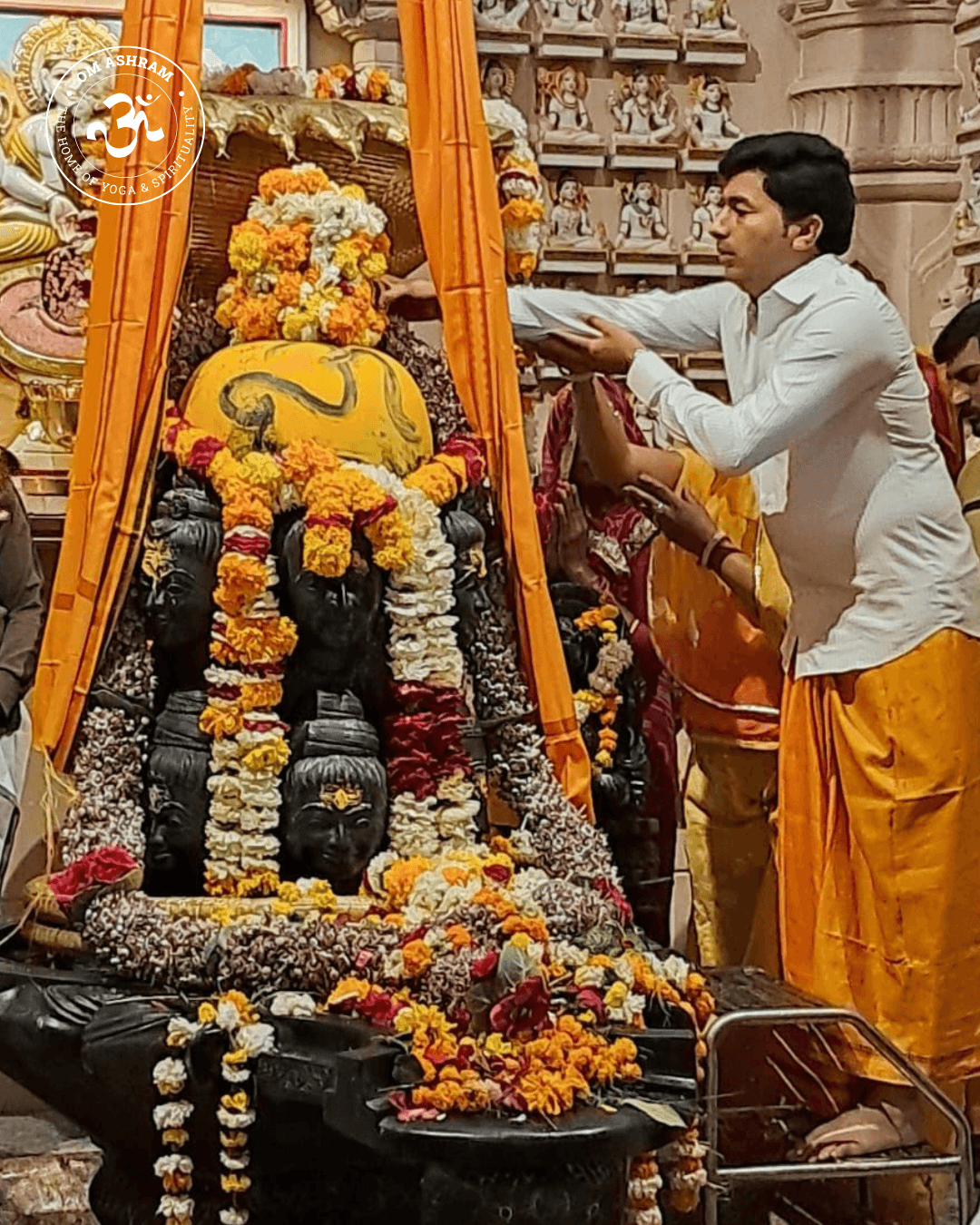
The Shiva altar at OM Ashram is unique. It is an immovable installation (Achala Pratiṣṭhā) of an earth Linga (Pārthiva Linga) made from beautiful black stone. It is a Dwadasha Jyotirlinga. It has twelve carved faces, which embody the collective power of all twelve ancient Jyotirlingas in a single form. Worshipping this one Linga with devotion is like worshipping all twelve at once.

The book Hidden Powers in Humans (1) connects the symbolism of the Shiva Linga with various energies and chakras. The color of the Linga changes depending on the level of consciousness associated with the Chakra it represents:
- In the Mūlādhāra Chakra, it is a Grey Lingam, symbolizing the unconscious.
- In the Āgyā Chakra, it is milky-white, showing that consciousness is purified but not yet perfect.
- In the Sahasrāra Chakra, it is a White Lingam, symbolizing pure consciousness.
4. The Mighty Symbols of Divinity
The Jyotirlinga is accompanied by other symbols, each explaining an aspect of the divine. (3)

The Trishul (Trident): This is not a weapon but a symbol of the three fundamental principles of existence. Its prongs represent Ishwara (Absolute), Purusha (Consciousness), and Prakriti (Energy). Lord Shiva holds these three in perfect balance, demonstrating his mastery over the cosmos.

Sheshnaga (The Divine Serpent): The serpent represents Kundalini Shakti, the dormant cosmic energy within all of creation. It also symbolizes time—past, present, and future. By wearing the serpent, Lord Shiva shows that he is the master of time and energy, untouched by its flow.

The Sacred Vessel (Jaladhara): The vessel that drips water continuously onto the Lingam has a dual meaning. This water flow serves to cool and balance the immense, fiery energy of divine consciousness. It also symbolizes the unbroken stream of Amrita, the nectar of immortality, which sustains life and grants eternal bliss.
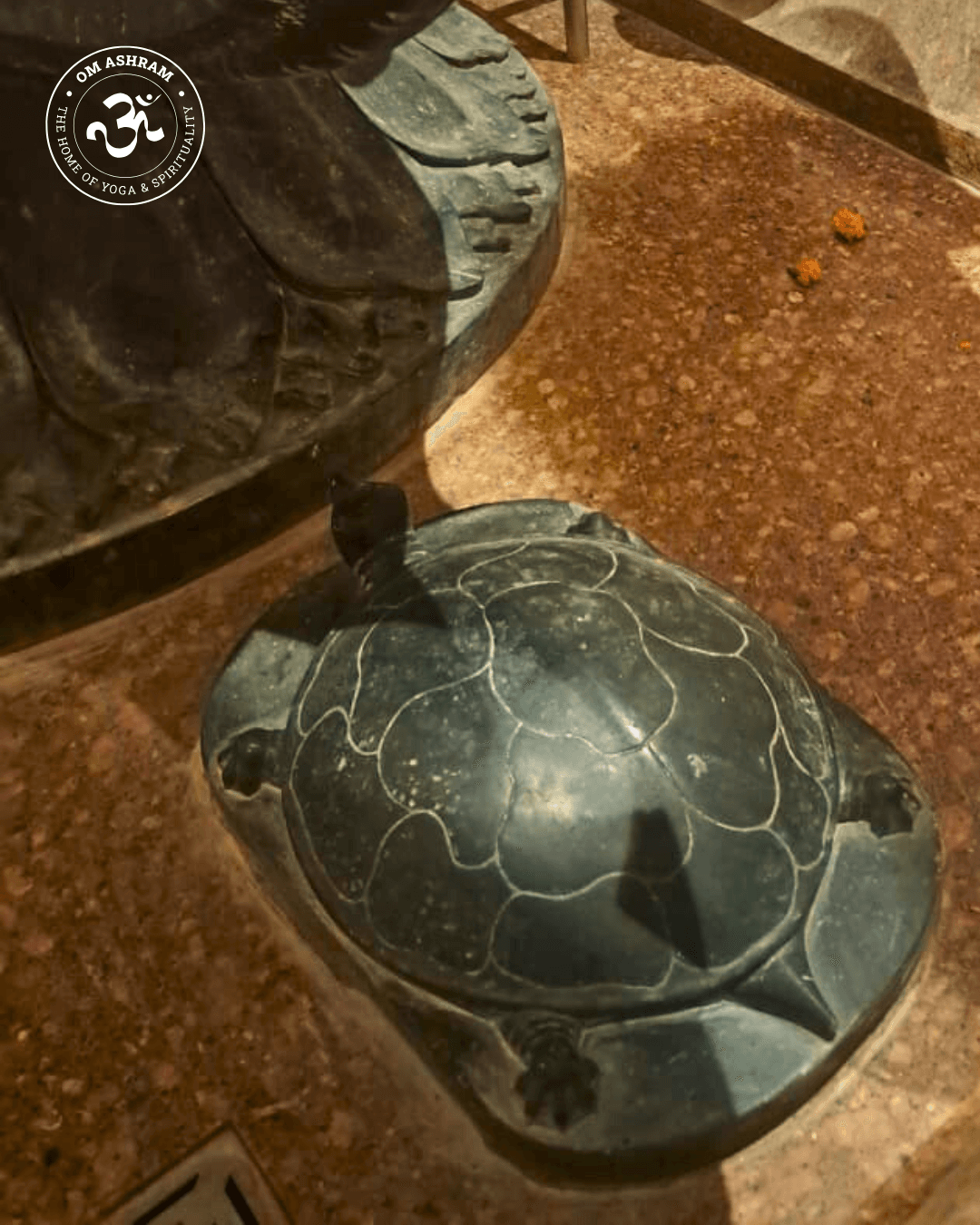
Kurm (The Tortoise): The tortoise is the base and support of the altar. This represents Lord Vishnu's avatar who took the form of a giant tortoise to provide a stable foundation for the churning of the cosmic ocean. Its presence signifies that the entire cosmic play rests upon a divine, stable foundation.
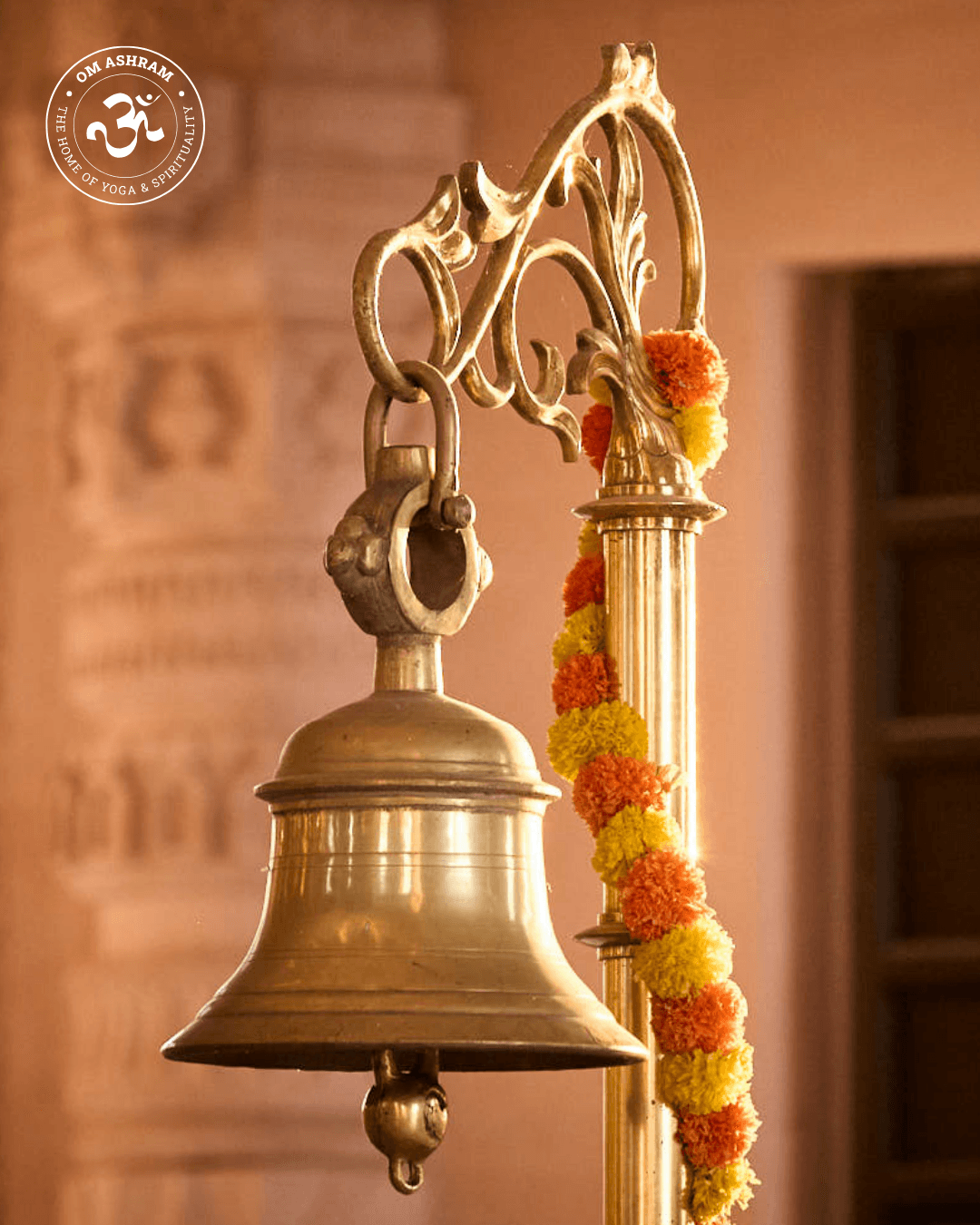
Instruments (Drum, Bell, and Conch): These instruments connect to Nāda (primordial sound). The spiritual path recognizes that Nāda Rūpa Para Brahma – The form of the Absolute is sound. Sound (or vibration) is the origin of the entire Universe. The sound of the drum (Dundubhi), along with the bell and conch, is among the ten types of Nāda (or vibrations) that yogis concentrate upon to attain spiritual perfection, overcome calamity, and fulfill wishes.
5. Conclusion: The Journey to Oneness
Each symbol is a key to understanding the timeless Vedic knowledge of Lord Shiva. The ultimate goal of worship is Self-realization, which is identical to realization of Absolute—the union of the individual consciousness (Jīvātmā) with the divine consciousness (Ātmā). This realization dissolves duality. When this unity is achieved, the distinction between individual forms dissolves, and the devotee perceives only the endless ocean of Absolute Consciousness.
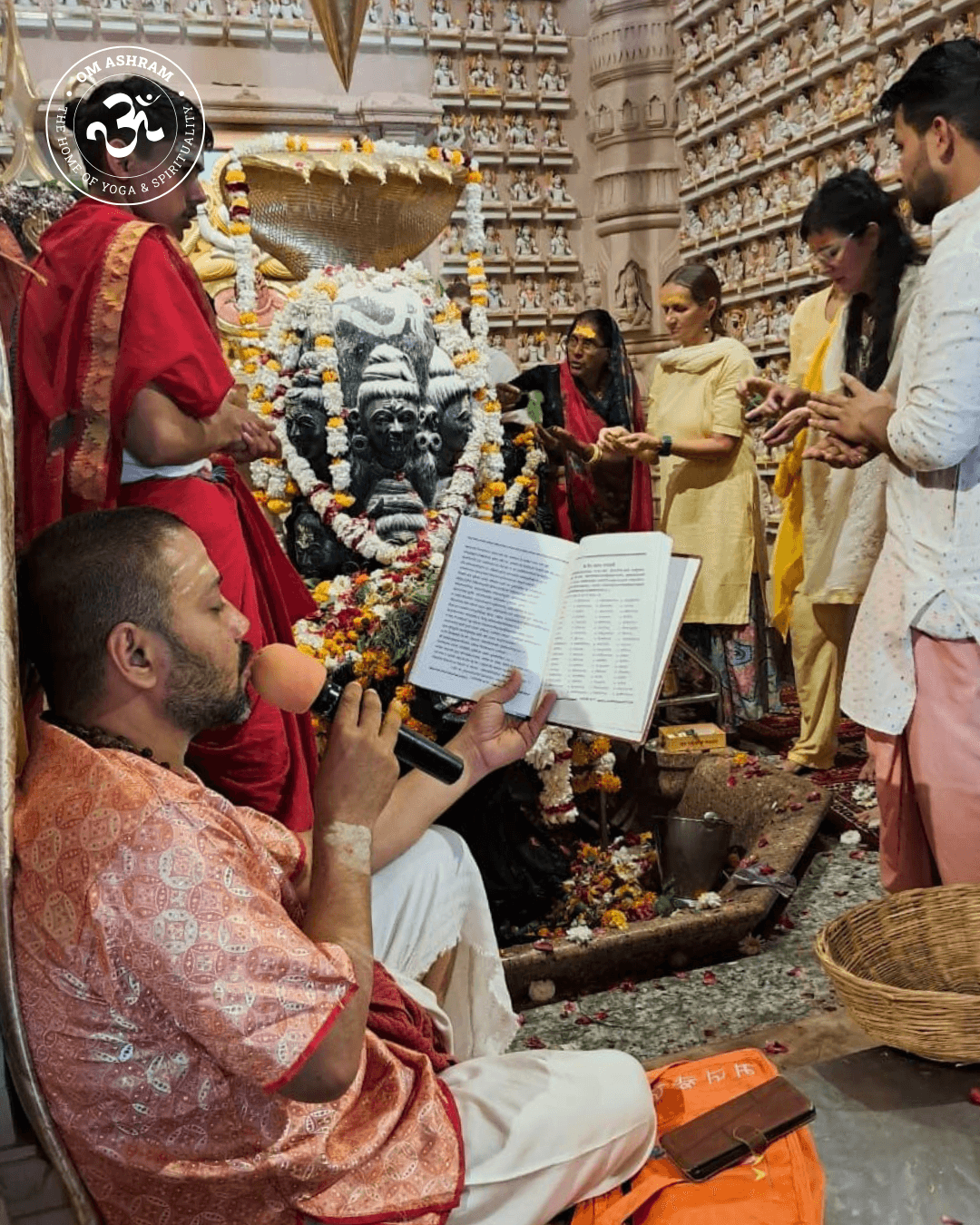
The following sources were cited in this article:
(1) Hidden Powers in Humans -Chakras and Kundalini (2024) authored by Paramhans Swāmī Maheshwarānanda
(2) Die Yogasutras des Patanjali (2020) translated and commented by Paramhans Swāmī Maheshwarānanda
(3) Shiva Purana (2016) editor by Dr. Mahendra Misal
OTHER ARTICLES
यज्ञशाला: रुपावास मंदिर के प्रतिष्ठापन का आध्यात्मिक हृदय

Yagya Shala: The Spiritual Heart of Temple's Consecration

The Timeless Vedic Legacy of Pran Pratishtha

प्राण प्रतिष्ठा: एक शाश्वत वैदिक परंपरा

ॐ आश्रम का शिव लिंग: प्रकाश स्तम्भ

Ashwin Navratri Celebration

आश्विन नवरात्रि उत्सव

Ganesh Chaturthi Celebration

गणेश चतुर्थी समारोह

The Architect Behind the OM-Shaped Wonder

A Celebration of Divine Love: Remembering Shree Mataji's Mahasamadhi

Shree Vishwadeep Gurukul: Examination Result Day

Timeless Traditions: A Vedic Wedding at Om Ashram

Sacred Union: A Vedic Wedding at Om Ashram

Chaitra Navratri Celebration

OTHER ARTICLES
आश्विन नवरात्रि उत्सव
Oct, 02 2025
Ganesh Chaturthi Celebration
Aug, 28 2025
गणेश चतुर्थी समारोह
Aug, 28 2025
The Architect Behind the OM-Shaped Wonder
Aug, 14 2025
Shree Vishwadeep Gurukul: Examination Result Day
May, 30 2025
Sacred Union: A Vedic Wedding at Om Ashram
May, 14 2025
Chaitra Navratri Celebration
Mar, 30 2025
